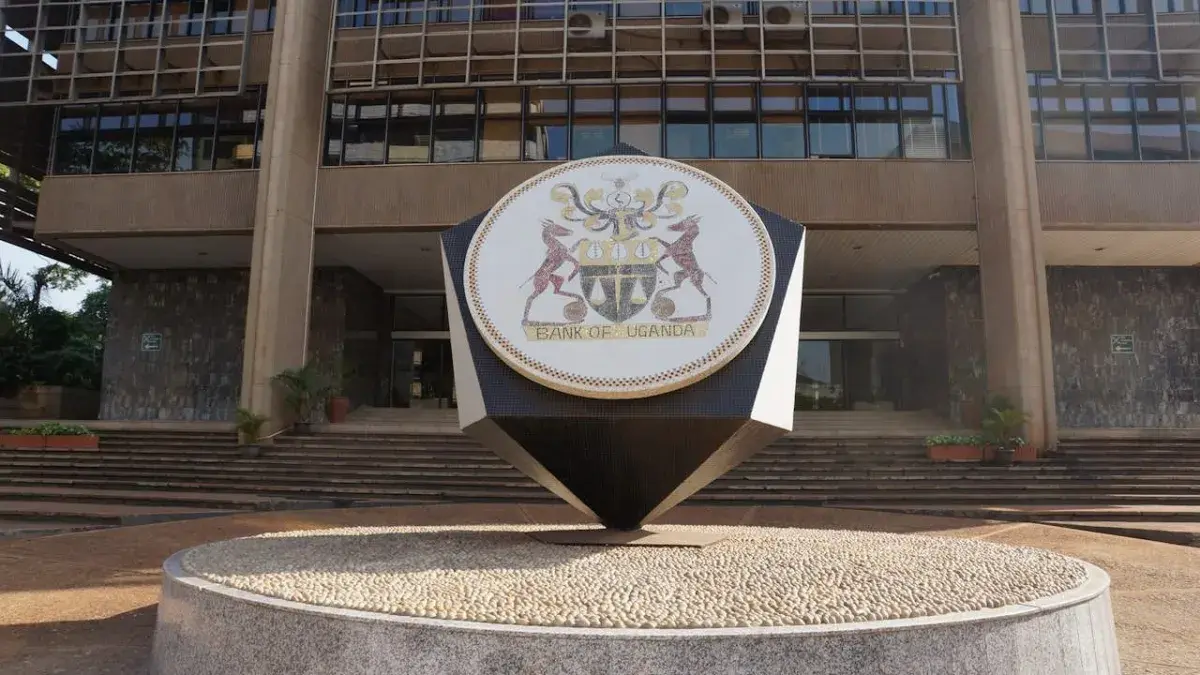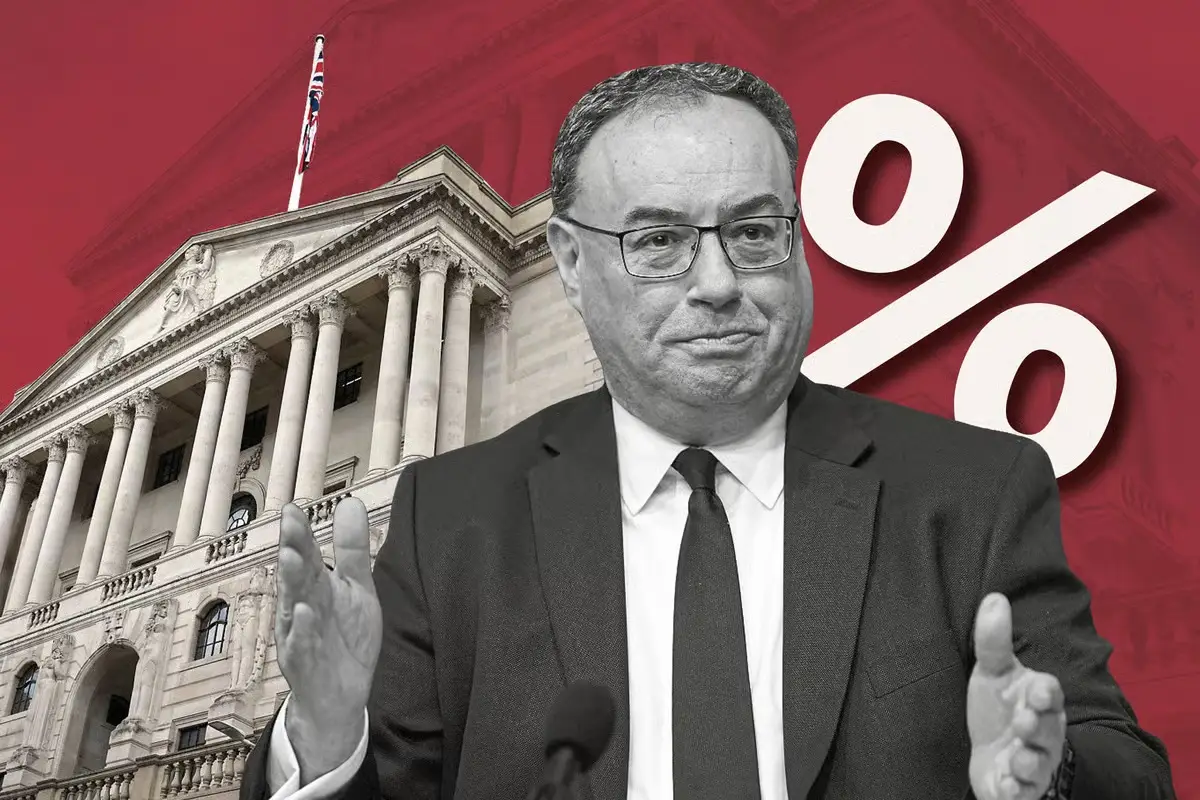Uganda’s inaugural 25-year Treasury bond has shocked financial markets with an unexpectedly low 16% yield, defying conventional wisdom and market expectations in a move that signals the government’s aggressive strategy to control spiraling debt servicing costs. The Bank of Uganda’s deliberate rejection of higher-yielding bids has created ripple effects across East Africa’s financial landscape, challenging traditional bond pricing mechanisms while raising questions about long-term market sustainability.
One decision can change your entire career. Take that step with our Online courses in ACCA, HESI A2, ATI TEAS 7, HESI EXIT, NCLEX-RN, NCLEX-PN, and Financial Literacy. Join Serrari Ed and start building your brighter future today.
The Auction That Defied Expectations
During the landmark auction on August 6, 2025, Uganda’s 25-year Treasury bond had a total offering of UGX 500 billion ($139.7 million), marking the longest-maturity government security ever issued by the East African nation. However, the real story lay not in the bond’s debut, but in how the central bank managed its pricing strategy.
Market expectations positioned the bond’s debut yield between 17-18 percent, aligning with traditional yield curve expectations where longer-term bonds typically offer higher returns to compensate investors for increased duration risk. Instead, the final 16% yield came as a significant shock to market participants who had prepared for substantially higher returns.
The numbers tell the story of the central bank’s strategic intervention: while bids worth UGX 851.1 billion ($237.8 million) poured in from eager investors, the Bank of Uganda accepted only a small fraction, totaling just UGX 57.165 billion ($15.97 million). This selective acceptance represented approximately 11.4% of the total offered amount and just 6.7% of submitted bids.
Breaking Traditional Yield Curve Logic
The 25-year bond’s 16% yield creates an unusual inversion in Uganda’s yield curve, trading below both the existing 15-year bond at 17.65% and the 20-year bonds trading at 17.5-17.9% in the secondary market. This departure from traditional bond pricing theory has left market participants grappling with new realities in Uganda’s domestic debt market.
Benoni Okwenje, General Manager for Financial Market Operations at Centenary Bank Uganda Limited, captured the market sentiment succinctly, noting that the yield “defies logic.” He explained that most investors allocated the bond are holding onto their positions, creating liquidity constraints in the secondary market that further complicate price discovery mechanisms.
“The yield registered on that bond was 16 percent, which is lower compared to the 20-year Treasury bond that is currently trading at 17.5-17.9 percent in the secondary market,” Okwenje observed, highlighting the unprecedented nature of this yield curve inversion.
Strategic Debt Management in Action
The Bank of Uganda’s approach reflects a broader strategic initiative to manage the country’s mounting debt burden, which has become a critical concern for policymakers. According to recent data, Uganda’s debt-to-GDP ratio reached 51.8% in 2024, approaching levels that have triggered concern among international development partners and credit rating agencies.
An Impala Market Staff report dated August 7, 2025 provided crucial insights into the central bank’s strategy, noting that despite “overwhelming demand,” the Bank of Uganda deliberately accepted only a small portion of bids. “The limited acceptance… signals a line in the sand,” the report stated. “The market clearly priced in a higher yield, but BoU refused to validate those levels.”
George Mulindwa, general manager at GenAfrica Asset Managers Uganda Limited, interpreted this move as evidence that the Ministry of Finance is “trying to control debt servicing costs by all means possible.” This assessment aligns with broader fiscal pressures facing the Ugandan government as it balances infrastructure development needs with debt sustainability concerns.
The Broader Economic Context
Uganda’s debt dynamics have evolved significantly over recent years, driven by ambitious infrastructure projects and economic expansion plans. The country’s public debt soared to approximately $760 billion in 2024, raising concerns about economic stability and debt servicing capabilities.
The Uganda Debt Network estimates that each Ugandan citizen would need to pay approximately UGX 2.5 million to clear the national debt, illustrating the substantial burden on a population still grappling with poverty and limited access to basic services. This context makes the government’s strategy to control debt servicing costs through yield management particularly significant.
The African Development Bank projects that Uganda’s economy will expand by 6.0% in 2024 and 7.0% in 2025, buoyed by stronger regional growth and normalization of global supply chains. However, these growth projections must be weighed against the challenges posed by increasing debt service obligations.
Build the future you deserve. Get started with our top-tier Online courses: ACCA, HESI A2, ATI TEAS 7, HESI EXIT, NCLEX-RN, NCLEX-PN, and Financial Literacy. Let Serrari Ed guide your path to success. Enroll today.
Market Participants’ Perspectives
The bond market’s response has been characterized by a mixture of surprise, uncertainty, and cautious optimism about future pricing dynamics. Market participants are closely watching for signals about how this precedent might affect future bond auctions and overall market liquidity.
Mubbale Kabandamawa-Mugalya, General Manager at Sanlam Investments Uganda Limited, emphasized that the market operates on a “willing sellers and buyers” basis. If the Ministry of Finance sets the yield at 16%, he noted, the Bank of Uganda must ensure it fits within the government’s debt servicing budget constraints.
This perspective highlights the delicate balance between market forces and government fiscal policy, particularly in developing markets where government bonds often represent the primary investment option for institutional investors seeking long-term, stable returns.
The limited secondary market trading in the 25-year bond has created additional complications for price discovery. With most allocated investors holding their positions, there’s insufficient trading volume to establish clear market valuations, creating uncertainty about the bond’s true market value.
Monetary Policy Integration
The bond auction’s outcome aligns with broader monetary policy trends in Uganda. On August 12, 2025, the Bank of Uganda’s Monetary Policy Committee maintained the Central Bank Rate at 9.75%, reflecting persistent global economic uncertainty and recurring geopolitical tensions.
This monetary policy stance provides context for the bond yield management strategy, as the central bank seeks to maintain consistency between its short-term policy rates and longer-term bond yields. The relatively low policy rate environment supports the argument for lower long-term bond yields, even if market participants had expected higher premiums for duration risk.
The integration of monetary policy with debt management represents a sophisticated approach to economic management, though it raises questions about potential distortions in market pricing mechanisms and long-term investor confidence.
Regional Financial Market Implications
Uganda’s bond market innovation occurs within a broader East African context where governments are increasingly sophisticated in their debt management strategies. The success or failure of Uganda’s approach could influence similar strategies across the region, where many countries face comparable debt sustainability challenges.
The Bank of Uganda’s ambitious Treasury bond auction calendar for 2025/2026 includes multiple long-term bond offerings, suggesting that the 25-year bond represents just the beginning of an expanded long-term debt strategy. The calendar covers auctions from July 2025 to June 2026, offering a mix of short-term Treasury bills and longer-term bonds with maturities ranging from 2 to 25 years.
This comprehensive auction schedule indicates the government’s commitment to developing a robust domestic bond market capable of financing long-term development projects while maintaining manageable debt service costs.
Infrastructure and Development Financing
The 25-year bond’s introduction aligns with Uganda’s long-term infrastructure development plans, particularly projects related to oil sector development and regional connectivity improvements. World Bank projections suggest these infrastructure projects could add 6.2% to Uganda’s GDP growth by 2025.
The extended maturity profile of the new bond provides the government with financing that better matches the long-term nature of infrastructure investments, potentially creating what economists describe as a “virtuous cycle” where improved infrastructure boosts productivity and enhances debt service capacity.
The oil sector, in particular, represents a significant opportunity for Uganda’s economic transformation. As the country prepares for commercial oil production, the long-term financing provided by the 25-year bond could support critical pipeline and production infrastructure development.
Risk Assessment and Credit Implications
Despite the successful debut, the 25-year bond carries inherent risks that investors and policymakers must carefully consider. The extended maturity exposes investors to significant interest rate risk, currency fluctuation risk, and the long-term political and economic stability of Uganda.
International credit rating agencies are likely monitoring Uganda’s debt management strategies closely, as unconventional yield curve management could signal either sophisticated fiscal policy or potential market distortions that might affect future borrowing costs in international markets.
The current account deficit, which narrowed to 7.9% of GDP in 2023 according to the African Development Bank, provides some context for the external sector pressures that influence domestic debt management strategies.
Future Auction Expectations
Market participants are eagerly awaiting the next 25-year bond auction scheduled for November 2025, which both Okwenje and Mulindwa believe will provide crucial clarity on the bond’s pricing sustainability. This upcoming auction will test whether the Bank of Uganda can maintain its yield management strategy in the face of persistent market expectations for higher returns.
The November auction will likely serve as a crucial test case for several key questions: Can the central bank continue to reject higher-yielding bids without compromising market confidence? Will investor demand remain robust despite below-market yields? How will secondary market liquidity develop as more bonds enter circulation?
Long-term Market Development
Market observers anticipate that the 25-year Treasury bond will positively influence pricing dynamics for other long-term financial products, including corporate bonds and mortgage products with durations exceeding 20 years. This benchmark effect could help develop Uganda’s broader capital markets by providing reference rates for private sector borrowing.
The successful establishment of a 25-year government bond yield curve could encourage corporate issuers to consider longer-term debt offerings, potentially supporting private sector investment in long-term productive assets.
Financial institutions, particularly those offering mortgage products, may find the 25-year bond yield provides a useful benchmark for pricing long-term loans, potentially improving access to housing finance for Ugandan consumers.
Conclusion: A Market in Transition
Uganda’s 25-year Treasury bond debut represents a watershed moment in the country’s financial market development, demonstrating both the government’s strategic sophistication and the challenges inherent in managing debt sustainability in a developing economy context.
The successful auction, despite its unconventional pricing, signals the Bank of Uganda’s commitment to active yield curve management and debt cost control. However, the long-term success of this strategy will depend on maintaining investor confidence while achieving sustainable debt dynamics.
As Uganda navigates the complex balance between financing development needs and maintaining fiscal sustainability, the 25-year bond’s performance will serve as a critical barometer of the country’s financial market maturity and economic management capabilities.
The November auction will provide the next critical data point in this evolving story, as market participants, policymakers, and international observers watch to see whether Uganda’s bold approach to bond market management can deliver sustainable results in the long term.
Ready to take your career to the next level? Join our Online courses: ACCA, HESI A2, ATI TEAS 7 , HESI EXIT , NCLEX – RN and NCLEX – PN, Financial Literacy!🌟 Dive into a world of opportunities and empower yourself for success. Explore more at Serrari Ed and start your exciting journey today! ✨
Track GDP, Inflation and Central Bank rates for top African markets with Serrari’s comparator tool.
See today’s Treasury bonds and Money market funds movement across financial service providers in Kenya, using Serrari’s comparator tools.
photo source: Google
By: Montel Kamau
Serrari Financial Analyst
19th August, 2025
Article, Financial and News Disclaimer
The Value of a Financial Advisor
While this article offers valuable insights, it is essential to recognize that personal finance can be highly complex and unique to each individual. A financial advisor provides professional expertise and personalized guidance to help you make well-informed decisions tailored to your specific circumstances and goals.
Beyond offering knowledge, a financial advisor serves as a trusted partner to help you stay disciplined, avoid common pitfalls, and remain focused on your long-term objectives. Their perspective and experience can complement your own efforts, enhancing your financial well-being and ensuring a more confident approach to managing your finances.
Disclaimer: This article is for informational purposes only and does not constitute financial advice. Readers are encouraged to consult a licensed financial advisor to obtain guidance specific to their financial situation.
Article and News Disclaimer
The information provided on www.serrarigroup.com is for general informational purposes only. While we strive to keep the information up to date and accurate, we make no representations or warranties of any kind, express or implied, about the completeness, accuracy, reliability, suitability, or availability with respect to the website or the information, products, services, or related graphics contained on the website for any purpose. Any reliance you place on such information is therefore strictly at your own risk.
www.serrarigroup.com is not responsible for any errors or omissions, or for the results obtained from the use of this information. All information on the website is provided on an as-is basis, with no guarantee of completeness, accuracy, timeliness, or of the results obtained from the use of this information, and without warranty of any kind, express or implied, including but not limited to warranties of performance, merchantability, and fitness for a particular purpose.
In no event will www.serrarigroup.com be liable to you or anyone else for any decision made or action taken in reliance on the information provided on the website or for any consequential, special, or similar damages, even if advised of the possibility of such damages.
The articles, news, and information presented on www.serrarigroup.com reflect the opinions of the respective authors and contributors and do not necessarily represent the views of the website or its management. Any views or opinions expressed are solely those of the individual authors and do not represent the website's views or opinions as a whole.
The content on www.serrarigroup.com may include links to external websites, which are provided for convenience and informational purposes only. We have no control over the nature, content, and availability of those sites. The inclusion of any links does not necessarily imply a recommendation or endorsement of the views expressed within them.
Every effort is made to keep the website up and running smoothly. However, www.serrarigroup.com takes no responsibility for, and will not be liable for, the website being temporarily unavailable due to technical issues beyond our control.
Please note that laws, regulations, and information can change rapidly, and we advise you to conduct further research and seek professional advice when necessary.
By using www.serrarigroup.com, you agree to this disclaimer and its terms. If you do not agree with this disclaimer, please do not use the website.
www.serrarigroup.com, reserves the right to update, modify, or remove any part of this disclaimer without prior notice. It is your responsibility to review this disclaimer periodically for changes.
Serrari Group 2025
















